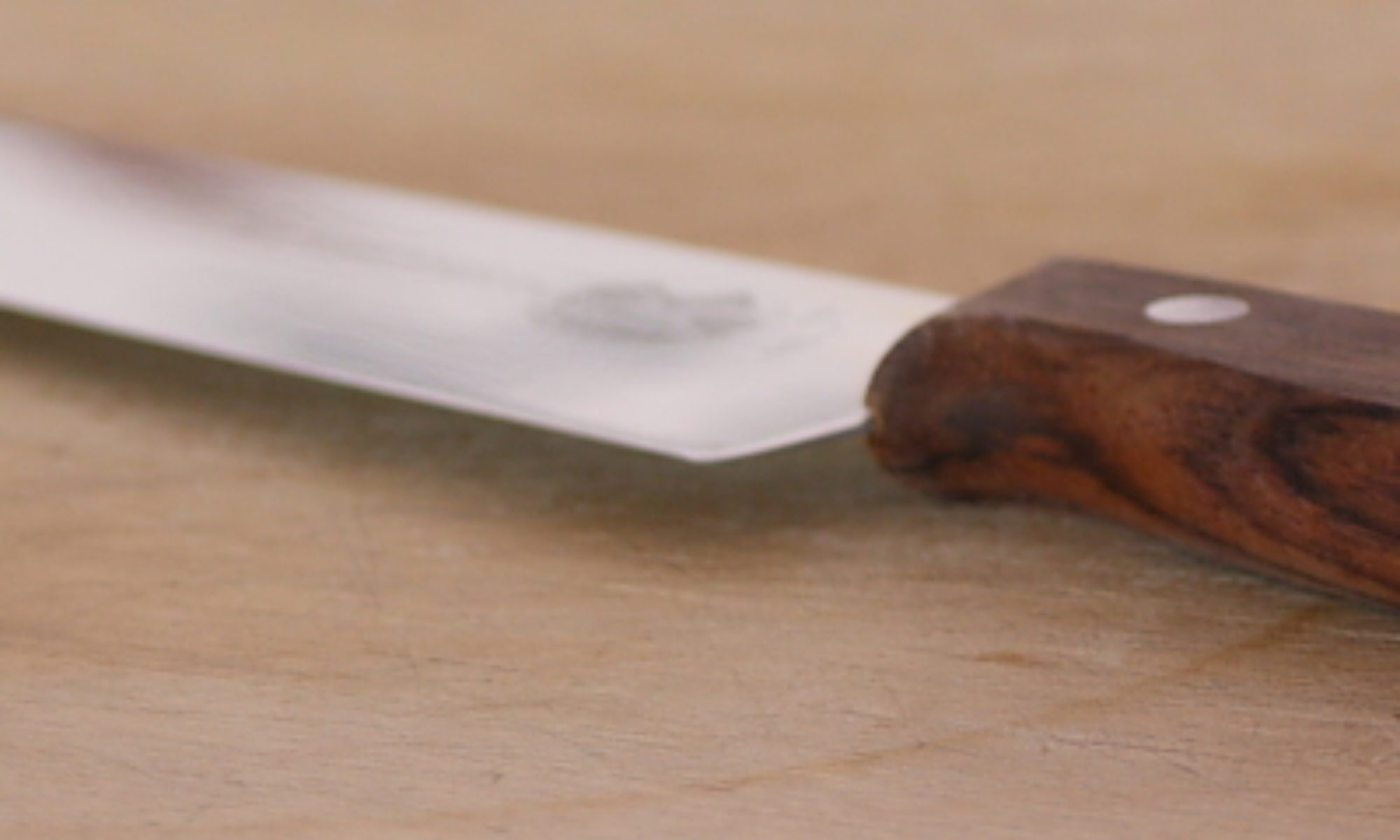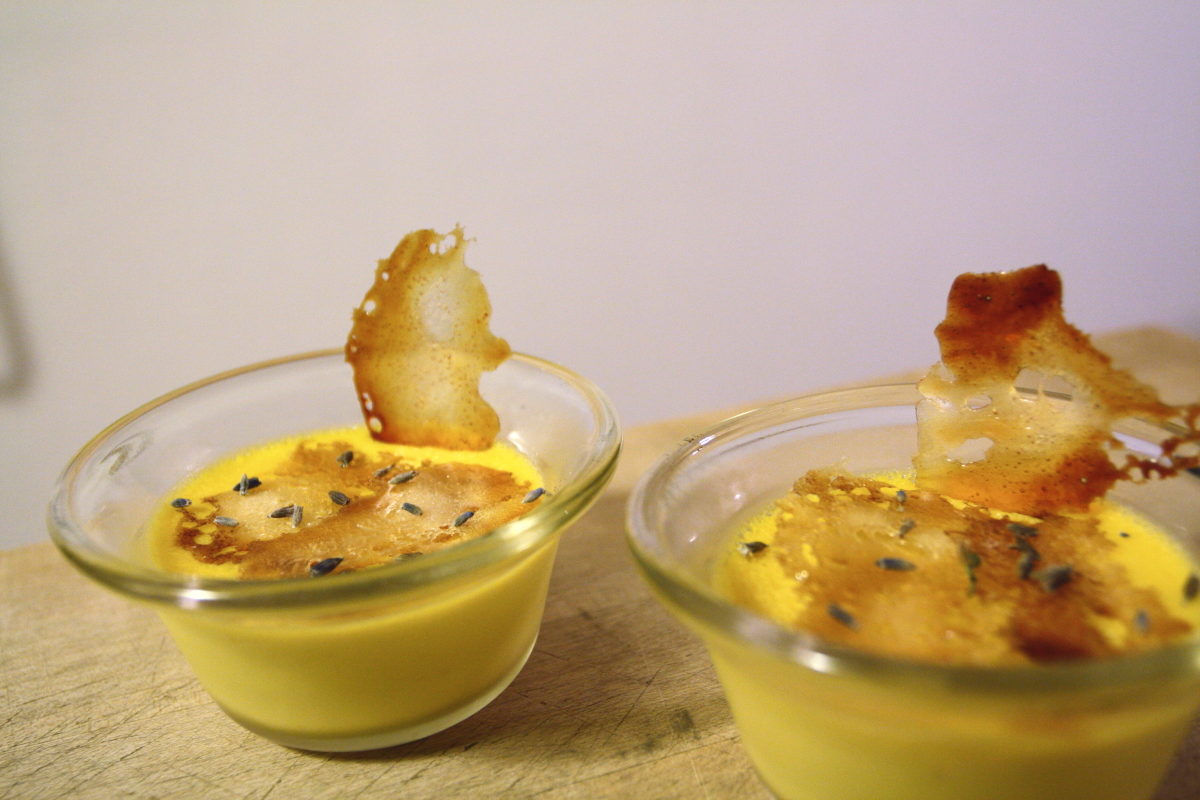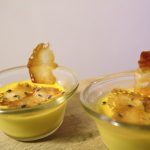
So, do you ever wonder how restaurants choose their house-made desserts? Think it’s based on flavor? We think not. We think it’s based on how easy the dessert is to make. After that, it’s how much profit the dessert produces. Then, probably, how good it is. So, we think, the tastiness factor comes in third on the list. If that’s the case, why is crème brûlée so often found on upscale menus? Simple. It’s simple to make!
We had a bit of lavender left over from when we made Lavender Lemon Sorbet the other week, and it had been a long time since we’d had any crème brûlée, so we thought we’d combine the two. And, lucky for you, we thought that we’d pass along the method to the madness.
A little sidetrack: baking is nothing more than chemistry: combining ingredients in certain ratios and subjecting them to heating, cooling, etc. And, several of the classic dessert items have well-defined ratios of ingredients; for example, the flour-to-butter ratio for puff pastry is 1 to 1. That is, an equal amount of flour and butter (by weight). Other traditional crusts have differing ratios. Understanding this allows the baker to scale the recipe up or down without changing the end product. Nice! So, we were wondering if there’s a traditional ratio for the ingredients in crème brûlée. As we browsed the Internet, we realized that, apparently there isn’t. We did come across this site, which detailed crème brûlée made with varying amounts of egg to cream, so we thought that was a good place to start.
Oh, and we’ll show you how to make the sugar crust without a blowtorch.
Lavender Crème Brûlée
Ingredients
- 1 cup heavy cream
- 1 tsp lavender
- 1 vanilla bean pod
- 2-3 egg yolks
- 2 1/2 Tbs sugar (30 g)
- Boiling water
For the sugar crust
- unsalted butter
- 1 Tbs sugar
Instructions
- Preheat oven to 300°F. Place 4 ramekins in a baking pan.
- In a small saucepan over medium heat, bring vanilla pod, cream, and lavender to a boil. Strain to remove lavender buds and bean.
- In a medium bowl, whisk together egg yolks and sugar. While whisking, starting very slowly at first, pour hot cream into egg-sugar mixture. Strain egg and cream mixture.
- Pour into ramekins, then pour boiling water into baking pan until water comes halfway up the sides of the ramekins.
- Bake for 30 minutes; the center will still be jiggly. Remove from water, cover, and cool completely.
- Increase oven temperature to 350°F
- Use your finger to rub butter into a small circle on parchment paper. Dust with a layer of sugar. Bake for 5 minutes, or until sugar starts turning brown. Remove sugar circles and let cool completely.
- To serve, place a crisp sugar circle on top of each crème brûlée.
Ingredient discussion:
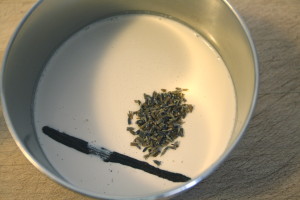
You have so few ingredients in this recipe, you need to use the best ingredients you can get. That will make your dessert the best. So, tasty eggs from real free-range hens, a real vanilla pod, and cream that’s only cream. Note that we list a range of egg yolks. We used three, but thought that the resulting Crème Brûlée could have been a little looser and more tender, so we’d probably go with two yolks next time.
Procedure in detail:
Preheat oven to 300°F. Place 4 ramekins or custard cups in a baking dish. The dish needs to be deep enough so that water can come at least halfway up the sides of the cups.
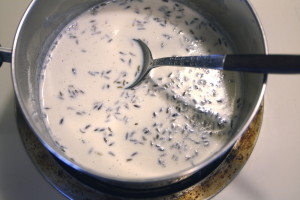
Boil cream. Place the cream, vanilla pod, and the lavender buds in a small saucepan over medium heat. Stirring often, bring the cream to a boil. Not a rolling boil; just watch for a few bubbles coming up in the center.
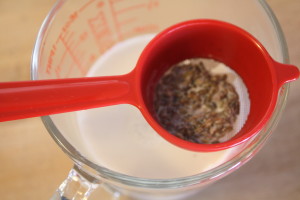
Strain. Pour the hot cream through a strainer to remove the lavender buds and vanilla pod. Rinse the pod well and reserve it for another use.
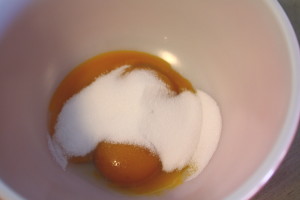
Whisk yolks and sugar. In a medium bowl, whisk together the egg yolks and the sugar.
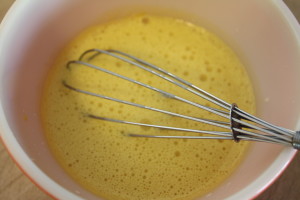
Add hot cream. Whisking continuously, add the hot cream, starting very slowly at first, but gradually picking up speed. By starting slowly, you temper the yolks, which is basically mixing them with the hot cream without cooking them.
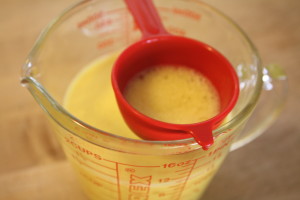
Strain. Just in case, strain the liquid again. The key to crème brûlée is to make it as smooth and creamy as possible, so you don’t want a single lump of anything in the mixture. It also will help if you strain the mixture into something that has a pouring spout.
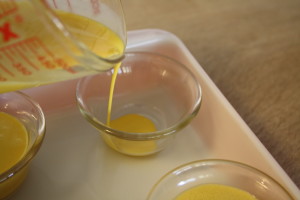
Pour into ramekins. Divide the custard filling among the four ramekins. Now, pour boiling water into the baking pan so it surrounds the ramekins and comes halfway up the sides. It’s probably easiest to add the boiling water after the baking dish has been placed on the oven rack.
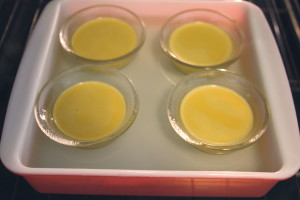
Bake. Let the custard bake undisturbed for 30 minutes. It will still be jiggly in the center, but not to worry, it will firm up. Once baked, remove the ramekins from the hot water, and let cool. When slightly cool, cover and refrigerate for at least 3 hours.
Increase temperature to 350°F. We’re going to make the sugar coating, and the temperature of the oven needs to be just a bit higher. (If you have a blowtorch, you’ll be able to caramelize the sugar right on top of the custard; we don’t, so we make sugar disks in the oven, following a tip from The Joy of Cooking.)
Make butter circles. On a piece of baking parchment or a piece of aluminum foil, make 6 to 8 butter circles the size of the ramekins. Just take a small amount of butter on your finger and rub it onto the paper, forming a small circle. We make extra in case a couple don’t turn out.
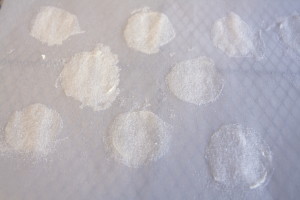
Sugar. Dust the butter circles with sugar. It’ll stick. Carefully blow away the excess sugar.
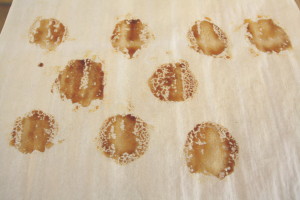
Bake. Slide into the oven (right on the rack), for about 5 minutes, or until sugar has melted and browned slightly. Remove and let cool completely.
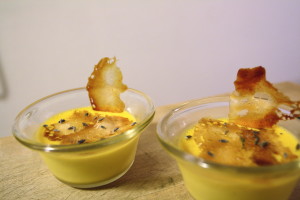
Serve. To serve, carefully peel a sugar circle from the parchment paper and lay it on top of the crème brûlée. If you still have a bit of lavender left, add a few buds as a garnish.
Everyone likes crème brûlée, and we think we made it even better with a slight hint of lavender. And look how easy it turns out to be. In a nutshell, it’s make a custard, and bake it in a water bath. We’re not sure why we don’t make it more often, but we do know why it’s so ubiquitous at restaurants: it’s tasty and seems elegant, but it’s also easy to make, and you can make it long before serving. In our book, Lavender Crème Brûlée gets five stars.
